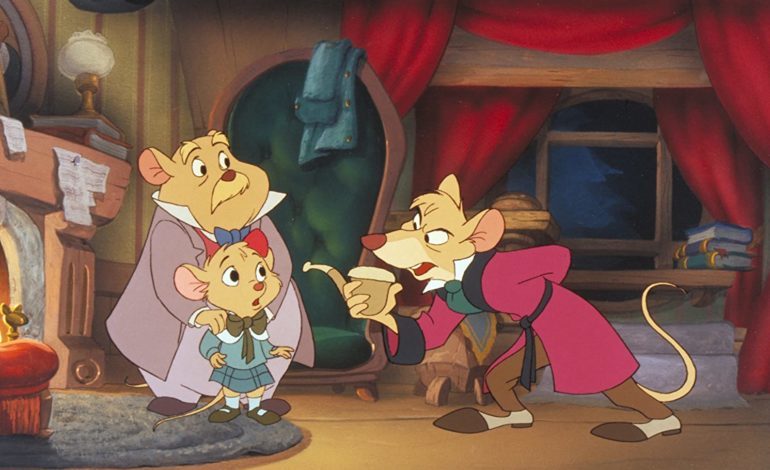

“I only hope that we don’t lose sight of one thing – That it all started with a mouse.” – Walt Disney
For decades, Disney has been spreading its pixie dust and magic into the hearts and homes of families. Growing up, my favorite vacation was a trip to Walt Disney World and our first Disney Cruise. When my son was born, I couldn’t wait to experience watching a Disney film through his eyes. The awe and delight of that first Disney film was The Little Mermaid for me, Cars for him. Even in my thirties, I still get the thrill I received as a child when hugging Mickey inside the Magic Kingdom, that magic owed to the Mouse’s humble beginnings.
Once the ball got rolling for Disney, Walt became more inventive with his storytelling. He was adventurous enough to lead the industry in full-color feature-length animated films starting with Snow White and the Seven Dwarfs, but it wasn’t until the 1950s when the studios began making live-action films and increasing their number of productions. When Walt passed away in 1966 from complications connected to lung cancer, he has been directly involved in 81 feature films, even earning an Academy Award posthumously.
After Disney’s death, the pixie dust faded a bit. His studios focused on live-action films, largely abandoning animation. 1966 was the start of a long dark period in Disney history. Between 1966 and 1986, only seven animated films were produced, the most popular ones being The Jungle Book, The Aristocats, Robin Hood, and The Rescuers. The seventh film, The Black Cauldron, under performed for the studio. Even with the magic of films like Mary Poppins, Disney’s animated spark seemed to be lost.


Then in 1986, Disney found a spark of a light that ended their 20 years-long dark period: The Great Mouse Detective, which released to both positive reviews and financial success. The film proved not only to management, but fans as well, that their animation department was still a strong arm of the company. Basil of Baker Street cleared and paved the way for the Disney Renaissance three years later in 1989, which saw the studio return to films based on well-known stories in the “Walt” style of innovative animated storytelling. From there, they began producing critically and commercially successful animated films on a regular basis.
The Great Mouse Detective is one of my favorite Disney films and, to this day, my best friend Caroline and I watch it and quote it together. The film is based on the “Basil of Baker Street” book series, which is in turn was based on Sherlock Holmes, and there are many nods to Holmes (Basil Rathbone) throughout. Sherlock is seeing playing the violin in the window while his shadow, along with Watson’s (Laurie Main) shadow, is seen during the scene where Basil (Barrie Ingham) breaks into his home to borrow his dog. As the mouse version of the famous detective, Basil also plays the violin in self-pity and is seen with the classic Holmes deerstalker and pipe. He also uses the well-known “Elementary” phrase when speaking to his Watson counterpart, Dawson (Val Bettin).
The film’s villain, Ratigan (Vincent Price) is the Moriarity to Basil’s Sherlock. He also fills in many boxes of the villain checklist. Like other Disney villains, Ratigan calls his henchmen “fools” when they upset him. When Ratigan gives his speech on how he is going to take over Mousdom, outwit Basil, and when he chases Basil in rage, his hair goes wild and the hairs on his head and his back go savage while running. When we think of a Disney villain song, most of us think of “Gaston” in Beauty and the Beast. Yet before LeFou had the tavern singing about Gaston, Ratigan had his mice henchmen singing about him in verses with similar content and intent.


Like other Disney films, The Great Mouse Detective makes subtle nods to other films, among them a bubble machine that resembles Dumbo. Interestingly, before Beauty and the Beast or Tarzan, this was the first Disney film to mix computer animation with traditional animation. During the climax when Basil fights Ratigan in Big Ben, the animation is beautifully supplemented with CGI. Likewise, there was no soundtrack released alongside the film’s theatrical debut and we didn’t get an OST until 1992. The music was mostly instrumental as opposed to big musical numbers, a creative way to aid the plot along as a quiet partner in the background. There are only three songs included in the film, and one wasn’t even performed; it was a record playing while Basil sits in a literal trap. When we get to the one big broadway-esque style musical number, it’s done to distract the tavern-goers and let our heroes escape while the tavern erupts in chaos.
Thanks to The Great Mouse Detective, Disney finally got the confidence to green-light many other animated films into production. As we all know, the 90s became the age of Disney when they produced the highest quality material. Yet the confidence of Disney’s animation department, the start of their Renaissance, and future films in the Disney vault were restarted, fittingly, with a mouse.
